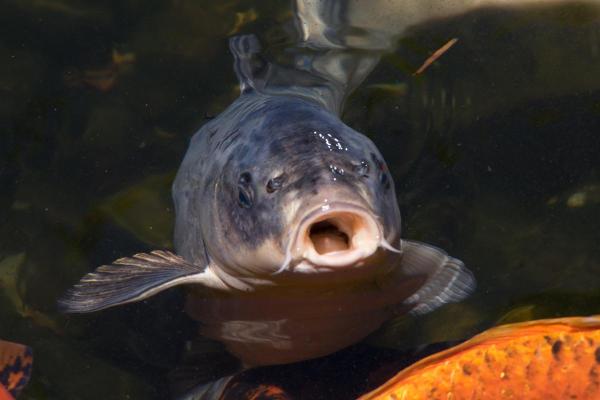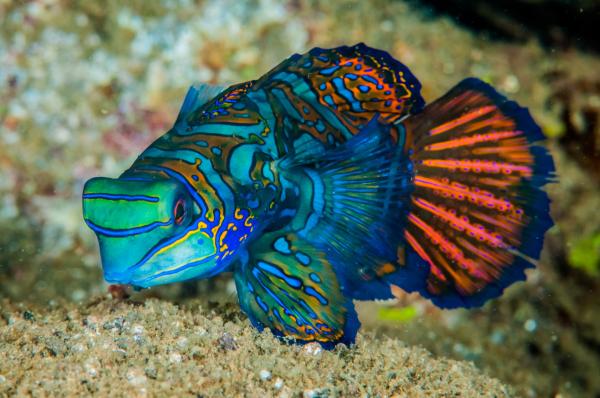Do Fish Have Tongues?


Beneath the serene ocean surface lies a world of intriguing secrets, and one of these mysteries revolves around the fish's tongue. Have you ever wondered if fish have tongues? Well, their tongues are not quite like ours. Fish, known for their remarkable diversity, also boast a wide array of feeding strategies and unique anatomical features.
In this AnimalWised article, we will explore the question of whether or not fish have tongues, as well as their diverse feeding strategies and unique anatomical adaptations.
Do fish have tongues?
When we think of tongues, we typically imagine the muscular organ that humans and other mammals use to taste food and swallow. However, fish tongues are quite different.
In fact, fish don't even have tongues in the traditional sense. Instead, they have a specialized structure called the basihyal, which is located on the floor of their mouth. The basihyal is made up of intricate folds of tissue and can be used to manipulate food and transport it to the pharynx.
The evolutionary origin of the basihyal is not fully understood, but it is thought to have evolved from a structure in early vertebrates called the hypobranchial. It first appears in the fossil record around 420 million years ago, during the Silurian period. This suggests that the basihyal evolved relatively early in the history of vertebrates.
Not all fish have basihyals, though. Fish that lack a basihyal have evolved various feeding strategies to capture and consume their prey. For example, some fish use suction to draw food into their mouths. Others have specialized teeth for tearing prey. These strategies are diverse and tailored to their specific ecological niches.
Have you ever wondered if all fish have scales? Learn more about the surprising diversity of fish scales in this other article.
What is the tongue of fish like?
As mentioned earlier, the basihyal is a bony structure that is found on the floor of the mouth of fish. It is also sometimes referred to as the "tongue bone" or "hyoid bone."
The basihyal is attached to the hyoid arch, which is a group of bones that support the tongue and gills. It resembles a tongue in appearance, but it does not have the same muscular constitution or function. In fact, unlike the tongues of mammals, the basihyal does not have taste buds or the ability to move in a wide range of ways.
Fish basihyals vary in structure and function, reflecting the diversity of fish feeding strategies. Fish have evolved specialized basihyals that allow them to thrive in a variety of ecological niches and to employ unique feeding strategies tailored to their dietary preferences and environmental challenges.
In some fish, the basihyal is a simple bony structure that helps move food to the back of the mouth for swallowing. In other fish, the basihyal is more complex and has specialized features.
Carnivorous fish, such as sharks and tuna, have teeth on their basihyals that help them catch and tear prey. Herbivorous fish, such as parrotfish and surgeonfish, have beak-like structures on their basihyals that help them grind and scrape plant material.
Filter-feeding fish, such as whale sharks and manta rays, have basihyals with rows of bristles that filter tiny organisms from the water.
Curious about how fish are born? Learn more about the fascinating variety of fish reproduction strategies in this other article.
What does the basihyal do?
The basihyal serves a myriad of significant roles within their physiology and feeding behaviors. These roles highlight its versatility and adaptability in assisting fish throughout their aquatic lives. Some of the key functions of the basihyal include:
Feeding
The basihyal plays a critical role in the feeding process of fish. It helps to manipulate food within the mouth and to transport it to the pharynx. The basihyal is also involved in the crushing and grinding of food. In some fish, the basihyal is covered in teeth, and these teeth help to grip and tear prey.
Respiration
The basihyal also plays a role in respiration. It helps to move water over the gills, which allows the fish to breathe. The basihyal is connected to a series of bones that form the hyoid arch. The hyoid arch supports the gills and helps to move water over them.
Hearing
The basihyal is also involved in hearing. It is connected to a series of bones that transmit sound waves to the fish's inner ear. In other words, the basihyal helps to amplify sound waves and to transmit them to the inner ear.
Protection
Finally, the basihyal helps to protect the fish's ventral aorta. The ventral aorta is a major blood vessel that runs near the mouth. The basihyal can help to protect the ventral aorta from being damaged by sharp teeth or bones.
In addition to these four main functions, the basihyal may also play a role in other aspects of fish biology, such as reproduction and communication. However, more research is needed to fully understand the full range of functions of the basihyal.
Wondering how fish sleep? It's not as simple as closing their eyes. Discover the fascinating world of fish sleep in our related article.
Can fish taste food?
As mentioned before, fish do not have taste buds on their tongues like humans. But they do have taste buds located in various parts of their mouths, including the lips, barbels, and throat.
These taste buds detect different chemical compounds in the water, allowing fish to identify suitable prey, mates, and avoid potential dangers. Fish have evolved diverse taste preferences based on their diets, and their sense of taste plays a crucial role in their survival and behavior in their aquatic environment.

If you want to read similar articles to Do Fish Have Tongues?, we recommend you visit our Facts about the animal kingdom category.
- McGrouther, M. (2020). Fish FAQ - Do fishes have tongues? AustralianMuseum. Available at: https://acortar.link/E0yczg
- Brown University (2023). Tongue makes the difference in how fish and mammals chew. Available at: https://news.brown.edu/articles/2011/06/chewing






